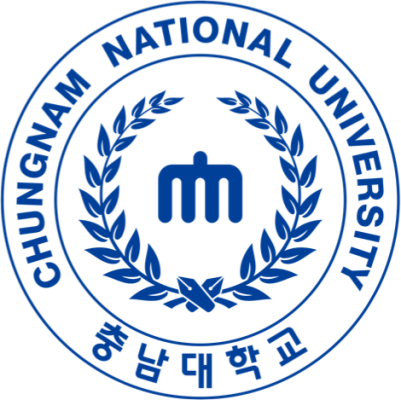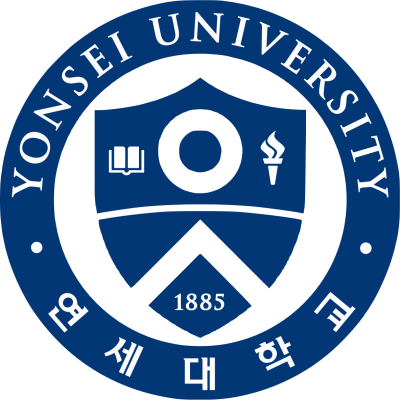Sunday Morning (08:30 - 12:30 PST), 08 January 2023
TUT-01: Unravelling the potential of softwarized/programmable networks - From theory to practice
TUT-02: IEEE 802.11be and Beyond: All you need to know about next-generation Wi-Fi
TUT-03: IoT systems and smartness: Digital twin, protocols, and proof of concept and introduction to space IoT
TUT-04: Distributed AI for mobile networks and edge systems
Sunday Afternoon (13:30 - 17:30 PST), 08 January 2023
TUT-05: 6G virtualized edge computing: From vehicles to edge and back
TUT-06: Low earth orbit satellite communication for 6G
TUT-07: Zero-touch service management (ZSM) for 6G network services
TUT-08: Development of next-generation ML-based security solutions exploiting the capabilities of programmable data planes and P4
Wednesday Morning (08:30 - 12:30 PST), 11 January 2023
TUT-09: Open AI cellular (OAIC): An open-source software platform for prototyping and testing AI-enabled O-RAN control
TUT-10: Holographic radio: A new paradigm for ultra-massive MIMO
TUT-11: The internet of bodies: My gateway to the digital world
TUT-12: 6G and beyond for meta verse-ready networks: Enabling technologies, challenges, and open research issues
TUT-01: Unravelling the potential of softwarized/programmable networks - From theory to practice
Date: Sunday, 08 January 2023
Time: 08:30 - 12:30 (PST)
Room: RENO
Abstract: 5G and Beyond networks rely on softwarized solutions to dynamically orchestrate and manage the different resources involved in the network from networking to computing components. Within this tutorial we will discuss over the evolution of network programmability and how such programmable capabilities enable flexible networks able to provide tailored connectivity/services to the different verticals. We will start with the basic background on programmability moving towards the state-of-the-art and beyond technologies and techniques that provide networks flexible capabilities to new-generation networks. Furthermore, we will complement the theory with practice and demos on how to set up the different software-based toolkits in order to orchestrate (decision-making), control (configure/reconfigure the network), and to monitor (verify the service) a programmable network remotely deployed in high-performance distributed cloud, MEC, Smartcity, and Smart Highway testbeds located in different locations of Belgium.
Johann M. Marquez-Barja
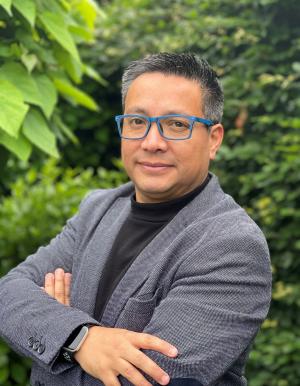 Prof. Johann is a Professor at University of Antwerp (ranked 14 in the top 50 young universities), as well as a Professor in IMEC (leading industry-oriented research institute in nanoelectronics and digital technologies), Belgium. He is leading the Wireless Cluster at IDLab/imec Antwerp. He is a member of ACM, and a Senior member of the IEEE Communications Society, IEEE Vehicular Technology Society, and IEEE Education Society where he participates in the board of the Standards Committee. His main research interests are: 5G advanced architectures including edge computing; flexible and programmable future end-to-end networks; IoT communications and applications. He is also interested in vehicular communications, mobility, and smart cities deployments. Prof. Marquez-Barja is co-leading the Citylab Smart City testbed, part of the City of Things programme, and the SmartHighway testbed, both located in Antwerp, Belgium. He was and is involved in several national and international research projects, leading applied research use cases, and technically coordinating some European projects (such as H2020 FUTEBOL and H2020 5G-Blueprint). Prof. Marquez-Barja has given several keynotes and invited talks in different major events, as well as received 30 awards in his career so far, and co-authored more than 180 published works including publications, editorials, and books. He is also serving as Editor and Guest editor for different International Journals, as well as participating in several Technical Programme and Organizing Committees for several worldwide conferences/congresses such as IEEE ICC, IEEE CCNC, IEEE VTC, EAI CROWCOM, ACM/EAI GOODTECHS, among others.
Prof. Johann is a Professor at University of Antwerp (ranked 14 in the top 50 young universities), as well as a Professor in IMEC (leading industry-oriented research institute in nanoelectronics and digital technologies), Belgium. He is leading the Wireless Cluster at IDLab/imec Antwerp. He is a member of ACM, and a Senior member of the IEEE Communications Society, IEEE Vehicular Technology Society, and IEEE Education Society where he participates in the board of the Standards Committee. His main research interests are: 5G advanced architectures including edge computing; flexible and programmable future end-to-end networks; IoT communications and applications. He is also interested in vehicular communications, mobility, and smart cities deployments. Prof. Marquez-Barja is co-leading the Citylab Smart City testbed, part of the City of Things programme, and the SmartHighway testbed, both located in Antwerp, Belgium. He was and is involved in several national and international research projects, leading applied research use cases, and technically coordinating some European projects (such as H2020 FUTEBOL and H2020 5G-Blueprint). Prof. Marquez-Barja has given several keynotes and invited talks in different major events, as well as received 30 awards in his career so far, and co-authored more than 180 published works including publications, editorials, and books. He is also serving as Editor and Guest editor for different International Journals, as well as participating in several Technical Programme and Organizing Committees for several worldwide conferences/congresses such as IEEE ICC, IEEE CCNC, IEEE VTC, EAI CROWCOM, ACM/EAI GOODTECHS, among others.
Nina Slamnik-Krijestorac
 Dr. Nina is currently a PhD researcher in the field of Applied Engineering Sciences, at the University of Antwerp and the IMEC research center in Belgium. She obtained her Master degree in telecommunications engineering at Faculty of Electrical Engineering, University of Sarajevo, Bosnia and Herzegovina. In the period from 2016 to 2018, she worked as Researcher and Teaching Assistant at Faculty of Electrical Engineering, University of Sarajevo. She is also teaching undergraduate students at the Faculty of Applied Engineering, University of Antwerp, thereby delivering laboratory exercises for the course Distributed systems. She authored and co-authored 25 publications in journals and international conferences. Her current research is mostly based on advanced network architectures with edge computing for vehicular systems, and the management and orchestration of the flexible and programmable next-generation end-to-end network resources and services.
Dr. Nina is currently a PhD researcher in the field of Applied Engineering Sciences, at the University of Antwerp and the IMEC research center in Belgium. She obtained her Master degree in telecommunications engineering at Faculty of Electrical Engineering, University of Sarajevo, Bosnia and Herzegovina. In the period from 2016 to 2018, she worked as Researcher and Teaching Assistant at Faculty of Electrical Engineering, University of Sarajevo. She is also teaching undergraduate students at the Faculty of Applied Engineering, University of Antwerp, thereby delivering laboratory exercises for the course Distributed systems. She authored and co-authored 25 publications in journals and international conferences. Her current research is mostly based on advanced network architectures with edge computing for vehicular systems, and the management and orchestration of the flexible and programmable next-generation end-to-end network resources and services.
TUT-02: IEEE 802.11be and Beyond: All you need to know about next-generation Wi-Fi
Date: Sunday, 08 January 2023
Time: 08:30 - 12:30 (PST)
Room: LAUGHLIN 1
Abstract: What will Wi-Fi be in 2030? As hordes of data-hungry devices challenge its current capabilities, the IEEE strikes again with 802.11be, alias Wi-Fi 7. This brand-new amendment promises an (r)evolution of unlicensed wireless connectivity as we know it, unlocking access to gigabit, reliable and low-latency communications, and reinventing manufacturing and social interaction through digital augmentation. More than that, time-sensitive networking protocols are being put forth with the overarching goal of making wireless the new wired. With the 802.11be standardization process being consolidated and that of its successor about to kick off, we will shed light on what to expect from Wi-Fi in the next decade, placing the spotlight on the must-have features for critical and delay-sensitive applications, and illustrating their benefits through tangible performance results.
Presenters:
Lorenzo Galati-Giordano
Lorenzo Galati-Giordano (SM’20) is Senior Research Scientist at Nokia Bell Labs since 2015. His current focus is on future indoor networks and next-generation Wi-Fi technologies, an area where he is contributing to the ongoing IEEE 802.11be standardization with pioneering works on large antenna arrays solutions for the unlicensed spectrum and receiving international attention from the press. He received the M.Sc. and the Ph.D. degrees in wireless communication from Politecnico di Milano, Italy, in 2005 and 2010, respectively, and the master's degree in Innovation Management from IlSole24Ore Business School, Italy, in 2014. He was also an R&D Engineer for Azcom Technology, an Italian SME, from 2010 to 2014. Lorenzo has more than 10 years of academic and industrial research experience on wireless communication systems and protocols, co-authored 20+ commercial patents, 30+ publications in prestigious books, IEEE journals and conferences, and 10+ standard contributions in the IEEE 802.11be.
Giovanni Geraci
Giovanni Geraci (SM’19) is an Assistant Professor at Universitat Pompeu Fabra in Barcelona and the Head of Telecommunications. He was previously a Research Scientist with Nokia Bell Labs and holds a Ph.D. from the UNSW Sydney. He serves as a Distinguished Lecturer for the IEEE ComSoc and the IEEE VTS and as an Editor for the IEEE TWC and IEEE COMML. He is co-inventor of a dozen patent families on wireless communications and networking, has delivered over 20 IEEE ComSoc tutorials, keynotes, and industry seminars—many of which on Wi-Fi and unlicensed spectrum technologies—and frequently gives invited lectures at prestigious industrial, governmental, and academic institutions. He received the IEEE PIMRC’19 Best Paper Award and the IEEE ComSoc EMEA Outstanding Young Researcher Award.
Boris Bellalta
Boris Bellalta (SM’13) is a Full Professor at Universitat Pompeu Fabra (UPF), where he heads the Wireless Networking group. His research interests are in the area of wireless networks and performance evaluation, with emphasis on Wi-Fi technologies, machine learning, and resource management. His recent works on spatial reuse, spectrum aggregation, txop sharing and multi-link operation for next-generation Wi-Fi have received special attention from the research community and industry. He is currently involved as principal investigator in several EU, national and industry funded research projects that aim to push forward our understanding of complex wireless systems. The results from his research have been published in 150+ international journal and conference papers. He has supervised 11 PhD students.
TUT-03: IoT systems and smartness: Digital twin, protocols, and proof of concept and introduction to space IoT
Date: Sunday, 08 January 2023
Time: 08:30 - 12:30 (PST)
Room: LAUGHLIN 2
Abstract: The Internet of Things (IoT) has been making waves and is permeating into the everyday life of people. All the smart-* applications are built around IoT. The smartness and artificial intelligence in IoT are important, and that should be at the point of interest in the IoT system and framework. Similarly, digital twins—virtual replicas of physical objects/things, process, or system—bridge physical and digital worlds now possible due to connectivity/IoT. Indeed EU project iCore explored this aspect. This tutorial will empathize with the above facts and, besides, will provide an overview of IoT first and then discuss various dimensions of IoT, including the practical challenges with Proof of concept of low-cost and open-source IoT hardware and software platform from WAZIUP. WAZIUP developed a highly low-cost, DIY, and open-source IoT solutions for start-ups, developers, and entrepreneurs. This tutorial will demo the IoT end-to-end IoT solutions. These include IoT long-range networking (LoRa), architecture framework including gateway and software platform, open horizontal platform, explaining all components from the bottom up (i.e., from the things with a focus on sensors and interconnection of the items). The open horizontal platform is being developed to solve the interoperability problem of the Internet of Things. It provides a layer of system abstractions and APIs to enable application software to interact with a diverse set of IoT resources and protocols.
This tutorial will describe some examples of data integration across different data sources that are shown in the context of user applications. And demonstrate the importance of smartness at the point of interest. Further focus on the other enabling technologies like real-world objects virtualization, cognitive and Artificial intelligence technologies, real-world knowledge proofing, objects networking, harvesting technologies, etc. The tutorial will also introduce the digital twin concept with example applications.
Presenters:
Venkatesha Prasad
Dr. R Venkatesha Prasad (SM 2012, DL 2017-20) is an associate professor at Embedded Software group of Delft University of Technology (TU Delft) since 2013. Between 2005 and 2012, he was a senior researcher and adjunct faculty at TU Delft. At TU Delft, he has supervised 18 PhD students (15 graduated, 3 ongoing) and 43 MSc students (36 graduated). He has (co-)authored more than 200 publications in the peer-reviewed international transactions/journals and conferences in the areas of Tactile Internet, Internet of Things (IoT), Cyber Physical Systems (CPS), Energy-harvesting, 60 GHz mmWave networks, Smart-energy systems, Personal networks, Cognitive Radios and Voice over Internet Protocol (VoIP). He has been successful in acquiring and executing several European and Dutch national projects in the areas of IoT, Future home networks (60 GHz), Smart-energy systems, Personal networks, and Cognitive Radios.
Venkatesha Prasad received his 4TU University Teaching Qualification diploma with excellence in 2015. Recognizing his research contributions to IoT, he has been selected as an IEEE Communication Society (ComSoc) Distinguished Lecturer on Internet of Things for the period 2016-2018. He has been contributing significantly to valorise research to practice by contributing to standards on Cognitive radios and Tactile Internet. He is currently the vice-chair of IEEE Tactile Internet standardization group. He is also leading many IEEE activities through positions in standards boards (secretary in the ComSoc standards board) and technical committees (vice-chair of cognitive networking committee in 2013-16). He is on the editorial board of many international transactions and magazines and is a regular TPC member for many prestigious journals and conferences. He was responsible for the signing of MoU between IISc - TU Delft and he is anchoring ISRO-TU Delft cooperation. He is a senior member of IEEE and ACM. He is a Fellow of IETE.
He completed his PhD from IISc, Bangalore, India in 2003. During his PhD research, a scalable VoIP conferencing platform was designed. His thesis work led to a start-up venture, Esqube Communication Solutions. While at Esqube, eight patent applications and three PCT applications were filed along with his colleagues. He was instrumental in Esqube’s selection as top 100 IT innovators in India in 2006 by NASSCOM and top 100 promising companies in Asia by RedHerring in 2008. Recently, he led a student team to win the worldwide Airbus challenge -- Fly Your Ideas (2019).
Abdur Rahim
Dr.-Ing Abdur Rahim is the Managing Director of WAZIUP e.V. an international non-profit organization promoting the Internet of Things (IoT) technologies in developing countries for SDG 2030. He is also a research collaborator of the Open-IoT group in CREATE-NET, FBK, a public research organization in Trento, Italy. Dr. Rahim belongs to the board of ZIGPOS GmbH, a high-tech indoor localization company in Germany. Being as well the project coordinator (as a part of FBK) of the H2020 WAZIHUB project, Dr. Rahim works on empowering young entrepreneurship and to create IoT co-innovation hubs in 20 African countries. He is part of the steering committee member of CROWNCOM, a cognitive radio annual conference since 2009. Dr. Rahim is an external supervisor of PhD students in ACEIoT (African Center of Excellence IoT), University of Rwanda. Dr. Rahim is a frequent international speaker in various summits, and conferences and workshops/ tutorials. Being a global traveler, he has visited more than 50 countries in the world. He has been working for more than 15 years in European projects (PULSERS I, PULSERS II, EUWB, C2Power, iCore, UNCAP, FiWARRE, i-locate, iKaaS, INTEGROIL, WAZIUP, WAZIHUB). He was the project manager of iCore, one of the pioneers and flag-ship IoT project in EU. He has been leading and involved in many activities like the leader of IERC AC8, Co-chair of SelfIoT, the management committee of COST-TERRA/COST IC0902. Dr.-Ing Rahim received his PhD degree in 2009 from Technical University Dresden, Germany, MSc from the University of Gavel, Sweden, and BSc from RUET, Bangladesh. His research interests include IoT Technologies and architectures, 5G, edge computing, big data technologies, IoT networking, and Artificial intelligence. He published more than 70 papers on international conferences and journals, as well as one book and several book chapters.
TUT-04: Distributed AI for mobile networks and edge systems
Date: Sunday, 08 January 2023
Time: 08:30 - 12:30 (PST)
Room: CARSON CITY 1
Abstract: This tutorial will give participants an understanding of the emergence of distributed artificial intelligence (AI) and machine learning (ML) methods and architectures for mobile and wireless networks and edge computing systems. The tutorial will explain how AI/ML methods and architectures need to be adapted to perform well in mobile and wireless environments such as 5G networks and beyond, distributed low-power networks, and similar settings. The tutorial will also showcase how AI can be used to improve the performance of such networks, for example, through the use of AI-enabled distributed edge computing systems.
Presenters:
Anders Lindgren
Dr. Anders Lindgren is currently a senior researcher at RISE and an adjunct senior lecturer at Lulea ̊ University of Technology. He received his Ph.D. from Lulea ̊ University of Technology in 2006, and worked at University College London and the Universtity of Cambridge from 2007-2008. Dr. Lindgren was a pioneer within DTN and ICN research and has been active in the research areas from an early stage of these new research fields. He has since migrated much of this experience into his distributed AI research and is currently part of the AI@EDGE Horizon 2020 project and the project coordinator of the EU ECSEL project DAIS with 47 partners across Europe. Anders has been involved in the work of the IRTF DTN and ICN research groups and is the co-founder of the ExtremeCom conference series.
Fehmi Ben Abdesslem
Dr. Fehmi Ben Abdesslem is a senior research scientist at RISE. He is also an affiliated researcher at the Karolinska Institute in Stockholm, and an honorary staff member at University College London. In 2008, he received a Ph.D. from the Sorbonne University in Paris, France, before working as a research fellow at the University of St Andrews and the University of Cambridge from 2009 to 2012. His area of expertise includes designing and prototyping protocols and algorithms for wireless communication, and AI applications for computer networks.
TUT-05: 6G virtualized edge computing: From vehicles to edge and back
Date: Sunday, 08 January 2023
Time: 13:30 - 17:30 (PST)
Room: RENO
Abstract: As we move from 5G to 6G, edge computing is one of the concepts that needs revisiting. Its core idea is still intriguing: Instead of sending all data and tasks from an end user’s device to the cloud, possibly covering thousands of kilometers and introducing delays lower-bounded by propagation speed, edge servers deployed in close proximity to the user, e.g., at some base station, serve as proxy for the cloud. This is particularly interesting for upcoming machine learning (ML)-based intelligent services, which require substantial computational and networking performance for continuous model training. Yet this promising idea is hampered by the limited number of such edge servers.
In a parallel universe, car makers have discussed challenges and opportunities of the vision of the connected car in relation to the need for distributed data management solutions ranging from the vehicle to the mobile edge and to the data centers. As a new concept, vehicle micro clouds have been proposed that bridge the gap between fully distributed vehicular networks based on short-range device-to-device communication and 5G+ based infrastructure for centralized solutions. Using selected application examples including the use of virtual traffic lights, intelligent intersection management, and platooning, we assess the needs on the underlying system components with a particular focus on inter-vehicle communication. Researchers from academia and industry met multiple times at an international Dagstuhl seminar to discuss open research challenges as well as open issues related to market-oriented design. We are now entering an era that might change the game in road traffic management.
In this tutorial, we discuss a way forward, namely the virtual edge computing (V-Edge) concept. V-Edge helps bridging the gap between cloud, edge, and fog by virtualizing all available resources including the end users’ devices and making these resources widely available. Thus, V-Edge acts as an enabler for novel microservices as well as cooperative computing solutions in next-generation networks. We introduce the general V-Edge architecture, and we characterize some of the key research challenges to overcome, to enable widespread and intelligent edge services.
Falko Dressler
 Falko Dressler is full professor and Chair for Telecommunication Networks at the School of Electrical Engineering and Computer Science, TU Berlin. He received his M.Sc. and Ph.D. degrees from the Dept. of Computer Science, University of Erlangen in 1998 and 2003, respectively. Dr. Dressler has been associate editor-in-chief for IEEE Trans. on Mobile Computing and Elsevier Computer Communications as well as an editor for journals such as IEEE/ACM Trans. on Networking, IEEE Trans. on Network Science and Engineering, Elsevier Ad Hoc Networks, and Elsevier Nano Communication Networks. He has been chairing conferences such as IEEE INFOCOM, ACM MobiSys, ACM MobiHoc, IEEE VNC, IEEE GLOBECOM. He authored the textbooks Self-Organization in Sensor and Actor Networks published by Wiley & Sons and Vehicular Networking published by Cambridge University Press. He has been an IEEE Distinguished Lecturer as well as an ACM Distinguished Speaker. Dr. Dressler is an IEEE Fellow as well as an ACM Distinguished Member. He is a member of the German National Academy of Science and Engineering (acatech). He has been serving on the IEEE COMSOC Conference Council and the ACM SIG- MOBILE Executive Committee. His research objectives include adaptive wireless networking (sub-6GHz, mmWave, visible light, molecular communication) and wireless-based sensing with applications in ad hoc and sensor networks, the Internet of Things, and Cyber-Physical Systems.
Falko Dressler is full professor and Chair for Telecommunication Networks at the School of Electrical Engineering and Computer Science, TU Berlin. He received his M.Sc. and Ph.D. degrees from the Dept. of Computer Science, University of Erlangen in 1998 and 2003, respectively. Dr. Dressler has been associate editor-in-chief for IEEE Trans. on Mobile Computing and Elsevier Computer Communications as well as an editor for journals such as IEEE/ACM Trans. on Networking, IEEE Trans. on Network Science and Engineering, Elsevier Ad Hoc Networks, and Elsevier Nano Communication Networks. He has been chairing conferences such as IEEE INFOCOM, ACM MobiSys, ACM MobiHoc, IEEE VNC, IEEE GLOBECOM. He authored the textbooks Self-Organization in Sensor and Actor Networks published by Wiley & Sons and Vehicular Networking published by Cambridge University Press. He has been an IEEE Distinguished Lecturer as well as an ACM Distinguished Speaker. Dr. Dressler is an IEEE Fellow as well as an ACM Distinguished Member. He is a member of the German National Academy of Science and Engineering (acatech). He has been serving on the IEEE COMSOC Conference Council and the ACM SIG- MOBILE Executive Committee. His research objectives include adaptive wireless networking (sub-6GHz, mmWave, visible light, molecular communication) and wireless-based sensing with applications in ad hoc and sensor networks, the Internet of Things, and Cyber-Physical Systems.
Onur Altintas
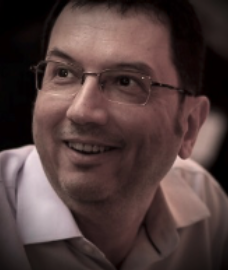 Onur Altintas is the InfoTech Labs Fellow at the InfoTech Labs ofToyota North America R&D in Mountain View, California. From 1999 to 2001 he was with Toyota Motor Corporation and was also a visiting researcher at Telcordia Technologies. From 2001 to 2004 he was with Toyota InfoTech- nology Center USA, and with Toyota InfoTechnology Center, Japan from 2004 to 2016.He received his B.S. and M.S. degrees from Orta Dogu Teknik Universitesi, Ankara, Turkey, and his Ph.D. degree from the University of Tokyo, Japan; all in electrical engineering. He has been the co-founder and general co-chair of the IEEE Vehicular Networking Conference (IEEE VNC) since 2009. He serves as an associate editor for IEEE ITS Magazine, IEEE Transactions on Intelligent Vehicles and IEEE Vehicular Technology Magazine. He is an IEEE VTS Distinguished Lecturer.
Onur Altintas is the InfoTech Labs Fellow at the InfoTech Labs ofToyota North America R&D in Mountain View, California. From 1999 to 2001 he was with Toyota Motor Corporation and was also a visiting researcher at Telcordia Technologies. From 2001 to 2004 he was with Toyota InfoTech- nology Center USA, and with Toyota InfoTechnology Center, Japan from 2004 to 2016.He received his B.S. and M.S. degrees from Orta Dogu Teknik Universitesi, Ankara, Turkey, and his Ph.D. degree from the University of Tokyo, Japan; all in electrical engineering. He has been the co-founder and general co-chair of the IEEE Vehicular Networking Conference (IEEE VNC) since 2009. He serves as an associate editor for IEEE ITS Magazine, IEEE Transactions on Intelligent Vehicles and IEEE Vehicular Technology Magazine. He is an IEEE VTS Distinguished Lecturer.
TUT-06: Low earth orbit satellite communication for 6G
Date: Sunday, 08 January 2023
Time: 13:30 - 17:30 (PST)
Room: LAUGHLIN 1
Abstract: 6G requires 3D network, non-terrestrial network (NTN) services for airplanes and UAVs, and advanced cellular network services. Growing research suggests that satellite communication systems can provide a new communication network for 6G by building a global network system. In particular, low earth orbit (LEO) satellites provide high data rate while achieving lost latency at a low cost. As such, academic discussions about 3GPP NTN standard are rapidly increasing, and many companies across industries are using their own LEO satellites to provide internet services. Gaining an accurate understanding of LEO satellite communication systems and the potential application of LEO is ever more important; accordingly, the proposed tutorial thoroughly discusses these topics across three different sections. The first section of this tutorial will introduce the LEO satellite communication systems, the current trends, and how LEO satellite communication systems are used by LEO satellite operators (e.g., SpaceX, Amazon, OneWeb). The second section of the tutorial will address the trend of NTN standardization. Lastly, the third section of the tutorial will provide an elaborate overview of the future technical issues of LEO communication technology, including: the initial access & synchronization, handover, waveform, constellation & routing, and MIMO technologies for LEO.
Presenter:
Daesik Hong
Daesik Hong (Fellow, IEEE) received his B.S. and M.S. degrees in electronics engineering from Yonsei University, Seoul, South Korea, in 1983 and 1985, respectively, and his Ph.D. from the School of Electrical Engineering, Purdue University, USA, in 1990. In 1991, he joined Yonsei University as an assistant professor, where he is currently an Underwood/Avison Distinguished Professor in the School of Electrical and Electronic Engineering. His program of research examines wireless communications, including 5G and 6G systems, OFDM(A) and multi-carrier communication, multi-hop and relay-based communication, in-band full-duplex, cognitive radio, and energy harvesting. Reflecting his impactful contributions in research and as an educator, Dr. Hong has been nominated to serve in various leadership positions. Since 2007, he has been serving as the Chair for Samsung-Yonsei Research Center for Mobile Intelligent Terminals. In 2009, he was appointed as an Underwood/Avison Distinguished Professor at Yonsei University. Dr. Hong also served as the Vice-President for Research Affairs and the President for Industry-Academic Cooperation Foundation, Yonsei University, from 2010 to 2011. Further, he served as the Chief Executive Officer (CEO) for Yonsei Technology Holding Company in 2011 and as the President for the Institute of Electronics and Information Engineers (IEIE) in 2017. From 2016 to 2019, he was appointed the Dean of the College of Engineering, Yonsei University. He received the Best Teacher Award at Yonsei University in 2005, 2011, and 2012. He was also a recipient of HaeDong Outstanding Research Awards of the Korean Institute of Communications and Information Sciences (KICS) in 2006 and the IEIE in 2009. He also served as an Editor for the IEEE Transactions on Wireless Communications from 2006 to 2011 and IEEE Wireless Communications Letters from 2011 to 2016 (More information about his research is available online).
TUT-07: Zero-touch service management (ZSM) for 6G network services
Date: Sunday, 08 January 2023
Time: 13:30 - 17:30 (PST)
Room: LAUGHLIN 2
Abstract: Although 5G has not shown all its potential, 6G foundations have already been devised by the research community. Besides supporting 5G services composed of end-user as well as vertical industry applications, which already constitute a challenge by reporting to 4G services, 6G expects other services that introduce further requirements in terms of latency, reliability, and data rate. 5G has anticipated this evolution by relying on the concept of network slicing, which leverages the flexibility provided by network softwarization to build network instances (virtual networks) tailored to the application or network service. Building on network slicing, 6G will support diverse application and service requirements using the same physical infrastructure. Accordingly, the increased number of services available in 6G will lead to a situation where a massive number of coexisting network services, with different performance requirements, functionality, and timespans, run in parallel. This puts significant strain on the management and orchestration system that traditional centralized designs, as in Cloud Computing and Network Function Virtualization (NFV) fail to cope with. Indeed, a network service is deployed on different technological domains, i.e., Radio Access Network (RAN), Core Network (CN), Cloud, and Edge computing domains. Each technological domain uses its own tools to orchestrate and manage the resources, which complicate the overall management process; hence a centralized solution cannot be envisioned. Moreover, the high number of managed objects involved in the Life-Cycle- Management (LCM) of end-to-end network service calls for autonomic and self-optimized management and orchestration mechanisms to reduce human intervention to the minimum, hence decreasing the reaction time to sensitive service degradation and avoiding human errors. To overcome these challenges, it is important that the management and orchestration system of network services combine a hierarchical and fully distributed solution to cope with the heterogeneity of the managed objects of different technological domains, with state-of-the-art Machine Learning (ML) techniques and Artificial Intelligence (AI) algorithms to ensure more autonomy towards Zero-touch Service Management (ZSM).
This tutorial aims to give insight into the challenges that arise for the orchestration and management of emerging 6G network services when deployed over different technological domains and possible solutions that will mainly rely on AI and ML to achieve the ZSM vision. The tutorial is divided into two parts. The first part is more theoretical and aims to introduce some visions on 6G architecture as well as 6G services requirements and the challenges that arise when orchestrating 6G network services. Then, it reviews existing approaches for 6G network service management that are based on ETSI ZSM and ENI standards and the H2020 European project MonB5G. The second part of the tutorial will illustrate through concrete examples how to achieve the concept of ZSM per technological domain and an end-to-end vision. Among the provided example, several have been implemented using real testbeds based on OpenAirInterface (OAI) and Kubernetes.
Presenter:
Adlen Ksentini
Adlen Ksentini is a professor in the Communication Systems Department of EURECOM. He is leading the Network softwarization group. He is involved in several EU projects related to Network Slicing and 5G, such as 5G!Drones and MonB5G. He is leading the Network softwarization group activities related to Network Slicing and Edge Computing. He has been involved in several H2020 EU projects on 5G, such as 5G!Pagoda, 5GTransformer, 5G!Drones and MonB5G. Adlen Ksentini research interests are on Network Sofwerization and Network Cloudification focusing on topics related to: network virtualization, Software Defined Networking (SDN), Edge Computing, Network slicing for 5G and beyond networks. He is interested on both system and architectural issues, but also on algorithms problems related to those topics, using Markov Chains, Optimization algorithms and Machine Learning (ML). He has co-authored over 100 technical journal and international conference papers. He received the best paper award from IEEE IWCMC 2016, IEEE ICC 2012, and ACM MSWiM 2005. He has been awarded the 2017 IEEE Comsoc Fred W. Ellersick (best IEEE communications Magazine’s paper). Adlen Ksentini has given several tutorials in IEEE international conferences, IEEE Globecom, IEEEE CCNC, IEEE ICC, IEEE/IFIP IM., and IEEE Netsoft Adlen Ksentini acted as IEEE ComSoc distinguished lecture from 2017 to 2020. He was the Director of IEEE ComSoc EMEA region and member of IEEE Comsoc Board of Governor 2019-2020.
TUT-08: Development of next-generation ML-based security solutions exploiting the capabilities of programmable data planes and P4
Date: Sunday, 08 January 2023
Time: 13:30 - 17:30 (PST)
Room: CARSON CITY 1
Abstract: The spreading adoption of Software Defined Networks opened new opportunities for enhanced network security. The advent of Southbound Interfaces such as OpenFlow can help define novel security applications that sit on top of the SDN controller. However, they do not allow to develop advanced data plane solutions that require minimal intervention by the control plane. The emergence of programmable data planes and of the P4 language has gained a lot of interest by practitioners, as it allows network security engineers define innovative approaches that can be fully executed in the data plane, or that can exploit the data plane capabilities to collect data used to feed an opportunely-trained Machine Learning algorithm. In addition, recent programmable data plane architectures make it possible to change the data plane pipeline in real-time, thus dynamically changing the behaviour of the switch according to the needs.
This tutorial offers a step-by-step introduction to the adoption of programmable data planes and its peculiar functionalities for network security purposes. We present an innovative P4- based approach to detect and mitigate DDoS attacks that exploits a real-time reconfiguration of the switch data plane pipeline. The approach relies on a two-step strategy, where some simple logic can be fully executed in the data plane for coarse-grained detection of DDoS attacks, and where a more refined ML-based strategy, leveraging on both data and control plane features after proper switch reconfiguration, makes it later possible to perform more refined analysis on the suspicious traffic.
Presenters:
Amir Al Sadi
Amir Al Sadi is a Ph.D. student on Computer Science and Engineering at Alma Mater Studiorum Universita` degli Studi di Bologna, Bologna, Italy. He received a Master Degree in Computer Science at the same University in 2021. He tutored classes at University of Bologna and has authored publications in multiple conferences and a Journal. His research interests focus on Software Defined Networking, Programmable Data Plane, Network Security.
Andrea Melis
Andrea Melis is an Adjunct Professor and a Postdoctoral Researcher with the Department of Computer Science and Engineering, University of Bologna. His research focuses on aspects of computer security related to innovative software architectures. In particular, his actual research activity aims to study, design, and implement innovative solutions that allow to improve the safety and operational robustness of connected production industrial network and devices for cyber-security contexts.
Davide Berardi
Davide Berardi is a Post-Doc Researcher at Alma Mater Studiorum—Universita` degli Studi di Bologna, Bologna, Italy, in 2016, where he received the Ph.D. degree in computer science and engineering in 2022. His research interests focus on computer security, cyber security red teaming, and network virtualization.
Marco Savi
Marco Savi is an Assistant Professor at the Department of Informatics, System and Communication (DISCo) University of Milano-Bicocca, Italy. In 2016 he received his Ph.D. degree in Information Technology (telecommunication area) from Politecnico di Milano, Italy and later he worked for four years at Fondazione Bruno Kessler, a research and innovation center in Trento, Italy, before joining University of Milano-Bicocca in 2020. His research interests mainly focus on the design and optimization of telecommunication networks and on cloud computing, with focus on SDN, NFV and Edge Computing. Dr Savi has been involved in various European research projects advancing access and core network technologies through network softwarization, including H2020 DECENTER, where he acted as Work Package leader. He is a member of the Editorial Board of Elsevier’s Computer Communication and serves as Reviewer of many international journals. He has also been a TPC member of several conferences, including IEEE ICC and IEEE GLOBECOM, and member of the Organizing Committee of IEEE SECON 2021 (Publication Chair), IEEE NetSoft 2022 (Web Co-Chair), ACM CoNEXT 2022 (Web Chair), ENS 2022 (General Chair), EuroP4 Workshop 2022 (Publicity Chair). He has published more than 50 papers in well-reputed journals and conferences.
Marco Prandini
Marco Prandini received the master’s and Ph.D. degrees in electronic and computer engineering from the University of Bologna, Italy, in 1995 and 2000, respectively, where he is currently a Research Associate with the Department of Computer Science and Engineering. His research activities started in the field of public-key infrastructures and later moved to subjects related to the security of microservice-based architectures, software-defined networks, IoT, and industrial control systems.
Franco Callegati
Franco Callegati (Senior Member, IEEE) is an Associate Professor with the University of Bologna, Italy. He is currently working on performance evaluation and experimental valida- tion of SDN/NFV— based networking solutions and 5G. He has been active in EU-funded research projects since FP4. His research interests are in the field of teletraffic modeling and performance evaluation of telecommunication networks.
TUT-09: Open AI cellular (OAIC): An open-source software platform for prototyping and testing AI-enabled O-RAN control
Date: Wednesday, 11 January 2023
Time: 08:30 - 12:30 (PST)
Room: RENO
Abstract: Since first conceptualized and proposed, the Open Radio Access Network (O-RAN) has been developed for openness and intelligence. To fulfill such objectives, various network elements and interfaces have been virtualized. O-RAN-based 6G networks will incorporate artificial intelligence (AI) into the deployment, operation, and maintenance of the network. AI can optimize parameters in a large search space, figure out a solution to respond to new situations, as well as interpolate when insufficient information is available. This tutorial will introduce an open-source software platform, called Open AI Cellular (OAIC), that enables prototyping and testing next-generation AI-based cellular RAN control. We will provide an overview to show how we design and integrate sample AI-based RAN controllers, such as scheduling. The tutorial will also highlight methodologies for developing open-source tools and services for AI-enabled O-RAN networks with software-defined radios (SDRs) along with an AI-enabled RAN testing framework for 6G research. Attendees will obtain substantial knowledge of and experience with O-RAN to facilitate their own research by leveraging our open-source platform.
Presenters:
Vuk Marojevic
Vuk Marojevic received the M.S. degree in electrical engineering from the University of Hannover, Germany, and the Ph.D. degree in electrical engineering from UPC-Barcelona Tech. He was assistant professor at UPC, research faculty at Wireless @ Virginia Tech and is currently an Associate Professor with the Department of Electrical and Computer Engineering at Mississippi State University. His research interests are in software-defined radio, spectrum sharing, vehicular communications, resource management with application to commercial and mission-critical cellular networks and unmanned aircraft systems. He is a PI of the NSF-sponsored AERPAW and Open AI Cellular (OAIC) projects. He serves as an Associate Editor of the IEEE Trans. on Vehicular Technology and the IEEE Vehicular Technology Magazine. He has given tutorials about software radio frameworks, open-source LTE and cellular communications security at major conferences and workshops, such as IEEE MILCOM and SDR WInnComm.
Minglong Zhang
Minglong Zhang received his M.S degree in electronic engineering from the Peking University, P.R. China and PhD degree in electrical and electronic engineering from Auckland University of Technology, New Zealand. He was a lecturer and research associate at Auckland University of Technology. He is a postdoctoral research associate at Mississippi State University. His research interests include 5G/6G V2X communications, software-defined radios, AI-enabled ORAN.
Bo Tang
Bo Tang received the M.S. degree in information processing from Chinese Academy of Sciences and Ph.D. degree in electrical engineering from University of Rhode Island. He is currently an Assistant Professor in the Department of Electrical and Computer Engineering at Mississippi State University. His research interests are machine learning, edge AI, and AI security, as well as their applications in wireless networks. He is the recipient of NSF CAREER Award (2021) and NIJ New Investigator/Early Career Award (2019). He is a Senior Member of IEEE and servers as an Associate Editor of the IEEE Trans. on Neural Networks and Learning Systems.
Vijay K. Shah
Vijay K. Shah is an Assistant Professor in the Cybersecurity Engineering (CYSE) Department at George Mason University (GMU). He is also a faculty member of Commonwealth Cyber Initiative (CCI), a Virginia state-wide initiative to foster 5G wireless, autonomous systems, data and cybersecurity research. His research interests include 5G/Next-G wireless, O-RAN architecture, AI/ML for communications and wireless testbed development and prototyping. He serves as a co-chair for IEEE workshop on next-generation radio access networks (co-located with IEEE GLOBECOM 2022).
TUT-10: Holographic radio: A new paradigm for ultra-massive MIMO
Date: Wednesday, 11 January 2023
Time: 08:30 - 12:30 (PST)
Room: LAUGHLIN 1
Abstract: To enable a ubiquitous intelligent information network, the forthcoming sixth generation (6G) wireless communications are expected to provide revolutionary mobile connectivity and high- throughput data services through ultra-massive multiple input multiple output (MIMO). Widely- utilized phased arrays relying on costly components make the implementation of ultra-massive MIMO in practice become prohibitive from both cost and power consumption perspectives. The recently developed reconfigurable holographic surfaces (RHSs) composing of densely packing sub- wavelength metamaterial elements can achieve holographic beamforming without costly hardware components. By leveraging the holographic principle, the RHS serves as an ultra-thin and lightweight surface antenna integrated with the transceiver, thereby providing a promising alternative to phased arrays. In this tutorial, we will first provide a basic introduction of RHSs. We then introduce the unique features of RHSs which enable ultra-massive MIMO for both communication and sensing, in a comprehensive way. Related design, analysis, optimization, and signal processing techniques will be presented. Typical RHS-based applications for both wireless communications and radio-frequency sensing will be explored. The implementation issues along with our developed prototypes and experiments will also be discussed. Formalized analysis of several up-to-date challenges and technical details on system design will be provided for different applications.
Presenters:
Boya Di
Boya Di (S’17-M’19) obtained her Ph.D. degree from the Department of Electronics, Peking University, China, in 2019. Prior to that, she received the B.S. degree in electronic engineering from Peking University in 2014. She was a postdoc researcher at Imperial College London and is now an assistant professor at Peking University. Her current research interests include holographic radio, reconfigurable intelligent surfaces, multi-agent systems, edge computing, and aerial access networks. She has published over 30 journal papers on the topic of reconfigurable holographic surface-aided communications and sensing. She received the best doctoral thesis award from China Education Society of Electronics in 2019. She is also the recipient of 2021 IEEE ComSoc Asia- Pacific Outstanding Paper Award. She serves as an associate editor for IEEE Transactions on Vehicular Technology since June 2020. She has also served as a workshop co-chair for IEEE WCNC 2020&2021 and ISWCS 2022.
Hongliang Zhang
Hongliang Zhang (S’15-M’19) received the B.S. and Ph.D. degrees at the School of Electrical Engineering and Computer Science at Peking University, in 2014 and 2019, respectively. He was a Postdoctoral Fellow in the Electrical and Computer Engineering Department at the University of Houston, Texas. Currently, he is a Postdoctoral Associate in the Department of Electrical and Computer Engineering at Princeton University, New Jersey. His current research interest includes reconfigurable intelligent surfaces, aerial access networks, optimization theory, and game theory. He received the best doctoral thesis award from Chinese Institute of Electronics in 2019. He is an exemplary reviewer for IEEE Transactions on Communications in 2020. He is also the recipient of 2021 IEEE Comsoc Heinrich Hertz Award for Best Communications Letters and 2021 IEEE ComSoc Asia-Pacific Outstanding Paper Award. He has served as a TPC Member for many IEEE conferences, such as Globecom, ICC, and WCNC. He is currently an Editor for IEEE Communications Letters, IET Communications, and Frontiers in Signal Processing. He has also served as a Guest Editor for several journals, such as IEEE Internet of Things Journal, Journal of Communications and Networks, etc.
Zhu Han
Zhu Han (S’01–M’04-SM’09-F’14) received the B.S. degree in electronic engineering from Tsinghua University, in 1997, and the M.S. and Ph.D. degrees in electrical engineering from the University of Maryland, College Park, in 1999 and 2003, respectively. From 2000 to 2002, he was an R&D Engineer of JDSU, Germantown, Maryland. From 2003 to 2006, he was a Research Associate at the University of Maryland. From 2006 to 2008, he was an assistant professor in Boise State University, Idaho. Currently, he is a Professor in Electrical and Computer Engineering Department as well as Computer Science Department at the University of Houston, Texas. His research interests include wireless resource allocation and management, wireless communications and networking, game theory, wireless multimedia, security, and smart grid communication. Dr. Han received an NSF Career Award in 2010, the Fred W. Ellersick Prize of the IEEE Communication Society in 2011, the EURASIP Best Paper Award for the Journal on Advances in Signal Processing in 2015, the IEEE Kiyo Tomiyasu Award in 2021, and several best paper awards in IEEE conferences. Dr. Han is top 1% highly cited researcher according to Web of Science since 2017, and AAAS fellow since 2019.
Lingyang Song
Lingyang Song (S’03-M’06-SM’12-F'19) received his PhD from the University of York, UK, in 2007. He worked as a research fellow at the University of Oslo, Norway until rejoining Philips Research UK in March 2008. In May 2009, he joined the School of Electronics Engineering and Computer Science, Peking University, and is now a Boya Distinguished Professor. His main research interests include wireless communications, mobile computing, and machine learning. Dr. Song is the co-author of many awards, including IEEE Leonard G. Abraham Prize in 2016, IEEE ICC 2014, IEEE ICC 2015, IEEE Globecom 2014, and the best demo award in the ACM Mobihoc 2015. He received National Science Fund for Distinguished Young Scholars in 2017, First Prize in Nature Science Award of Ministry of Education of China in 2017. Dr. Song has served as an IEEE ComSoc Distinguished Lecturer (2015-2018), an Area Editor of IEEE Transactions on Vehicular Technology (2019-), Co-chair of IEEE Communications Society Asia Pacific Board Technical Affairs Committee (2020-). He is a Clarivate Analytics Highly Cited Researcher.
TUT-11: The internet of bodies: My gateway to the digital world
Date: Wednesday, 11 January 2023
Time: 08:30 - 12:30 (PST)
Room: LAUGHLIN 2
Abstract: The Internet of Bodies (IoBs) is an imminent extension to the vast Internet of Things domain, where wearable, ingestible, injectable, and implantable smart objects form a network in, on, and around the human body. IoB devices can collect physiological and behavioral information from the human body and utilize such context-rich data in a myriad of applications to substantially enhance the quality of human life and improve the welfare of society. This tutorial provides a holistic insight into the potentials, advances, challenges, and prospects of the IoB concept. To this end, in the first part of the tutorial, we present fundamental issues related to IoB, covering a wide variety of topics such as: the taxonomy of IoB devices; IoB applications; system-level and network-level design goals and constraints; candidate communication technologies, and standards; peculiarities of channel characteristics in-on-and-around-the human body; and safety considerations. In the second part of the tutorial, we delve into challenges and key strategies of transceiver design, followed by a discussion on recent advances and open research problems related to IoB networking. Finally, as the cyber and biological worlds meet, security risks and privacy concerns take center stage, leading to a discussion of technology governance's multi-faceted legal, societal, ethical, and political issues.
Presenters:
Abdulkadir Celik
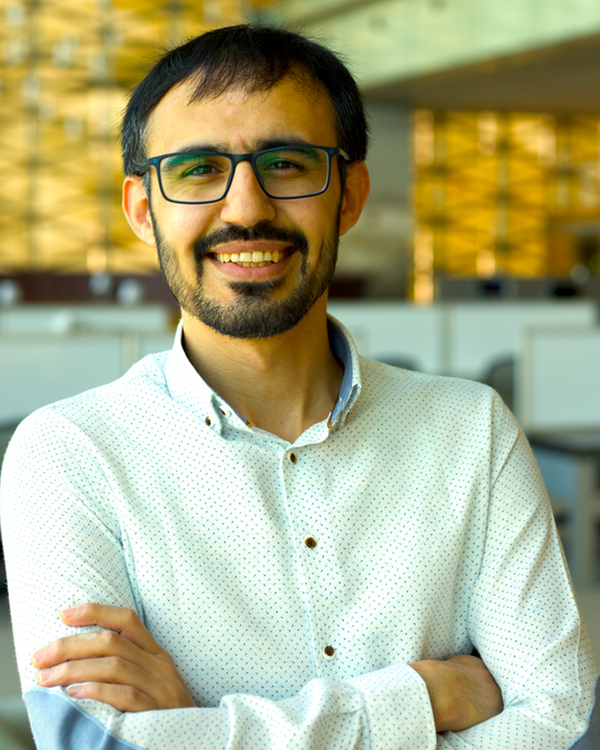 Abdulkadir Celik (Senior Member, IEEE) received the M.S. degree in electrical engineering in 2013, the M.S. degree in computer engineering in 2015, and the Ph.D. degree in co-majors of electrical engineering and computer engineering in 2016 from Iowa State University, Ames, IA, USA. He was a post-doctoral fellow at King Abdullah University of Science and Technology (KAUST) from 2016 to 2020. Since 2020, he has been a research scientist at the Communications and Computing Systems Lab (CCSL) at KAUST. His research interests are in the areas of wireless communication systems and networks.
Abdulkadir Celik (Senior Member, IEEE) received the M.S. degree in electrical engineering in 2013, the M.S. degree in computer engineering in 2015, and the Ph.D. degree in co-majors of electrical engineering and computer engineering in 2016 from Iowa State University, Ames, IA, USA. He was a post-doctoral fellow at King Abdullah University of Science and Technology (KAUST) from 2016 to 2020. Since 2020, he has been a research scientist at the Communications and Computing Systems Lab (CCSL) at KAUST. His research interests are in the areas of wireless communication systems and networks.
Ahmed Eltawil
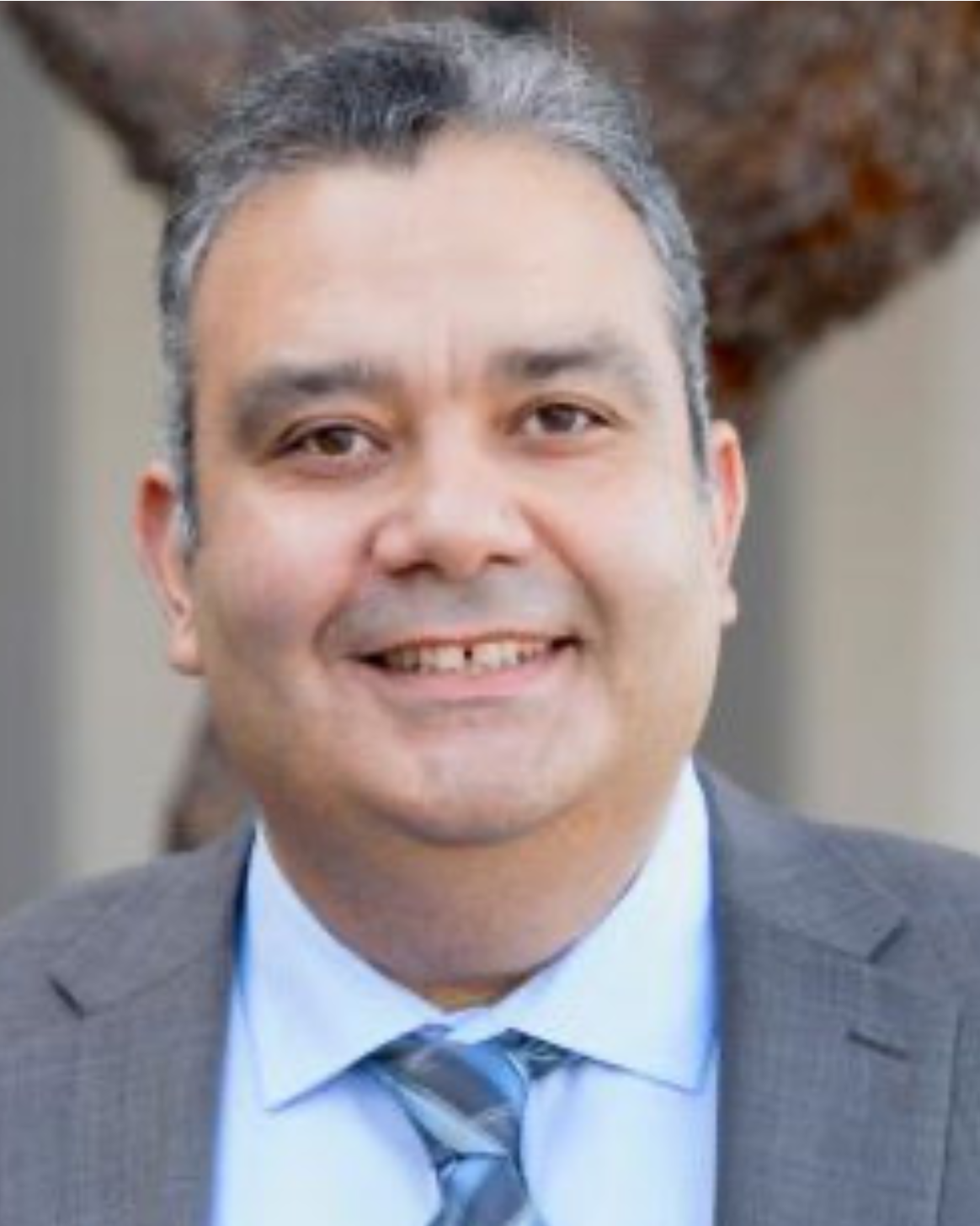 Ahmed Eltawil (Senior Member, IEEE) is a Professor of Electrical and Computer Engineering at King Abdullah University of Science and Technology (KAUST) where he joined the Computer, Electrical and Mathematical Science and Engineering Division (CEMSE) in 2019. Prior to that he was with the Electrical Engineering and Computer Science Department at the University of California, Irvine (UCI) since 2005. At KAUST, he is the founder and director of the Communication and Computing Systems Laboratory (CCSL). His current research interests are in the general area of smart and connected systems with an emphasis on mobile and personal systems. He received the Doctorate degree from the University of California, Los Angeles, in 2003 and the M.Sc. and B.Sc. degrees (with honors) from Cairo University, Giza, Egypt, in 1999 and 1997, respectively. Dr. Eltawil received several awards, including the NSF CAREER grant supporting his research in low power computing and communication systems. He is a senior member of the IEEE and the National Academy of Inventors, USA. In 2021, he was selected as “Innovator of the Year” by the Henry Samueli School of Engineering at the University of California, Irvine where he received a United States Congress certificate of recognition for his contributions.
Ahmed Eltawil (Senior Member, IEEE) is a Professor of Electrical and Computer Engineering at King Abdullah University of Science and Technology (KAUST) where he joined the Computer, Electrical and Mathematical Science and Engineering Division (CEMSE) in 2019. Prior to that he was with the Electrical Engineering and Computer Science Department at the University of California, Irvine (UCI) since 2005. At KAUST, he is the founder and director of the Communication and Computing Systems Laboratory (CCSL). His current research interests are in the general area of smart and connected systems with an emphasis on mobile and personal systems. He received the Doctorate degree from the University of California, Los Angeles, in 2003 and the M.Sc. and B.Sc. degrees (with honors) from Cairo University, Giza, Egypt, in 1999 and 1997, respectively. Dr. Eltawil received several awards, including the NSF CAREER grant supporting his research in low power computing and communication systems. He is a senior member of the IEEE and the National Academy of Inventors, USA. In 2021, he was selected as “Innovator of the Year” by the Henry Samueli School of Engineering at the University of California, Irvine where he received a United States Congress certificate of recognition for his contributions.
TUT-12: 6G and beyond for meta verse-ready networks: Enabling technologies, challenges, and open research issues
Date: Wednesday, 11 January 2023
Time: 08:30 - 12:30 (PST)
Room: CARSON CITY 1
Abstract: The metaverse is expected to become the next breakthrough of the mobile Internet, which allows geographically distant users to enjoy an online 3D virtual-reality experience with blending virtual space and physical space. To make the metaverse a reality, various sensing, networking, and communication technologies need to be integrated for ensuring the immersive experience of the Metaverse. For such an experience, the sixth generation (6G) wireless system will be designed to meet the requirements of ubiquitous sensing, seamless connectivity, low latency, and security. The 6G network aims to provide seamless global connectivity and high-speed broadband access through developing non-terrestrial networks (NTNs) which integrate unmanned aerial vehicles (UAVs) networks, high-altitude platform systems, and satellite communication networks. Moreover, the multi-access edge computing (MEC) is considered as an efficient solution that moves the computing and caching resources to the network edge, and thus the sensing data can be processed in real-time. Besides, blockchain technology with decentralized characteristics is attracting attention as an essential technology to address the challenging network management and security issues in the metaverse. In this tutorial, we will discuss a comprehensive review of recent pioneering work and enabling 6G technologies for the realization of the metaverse, including space-air-ground integrated network, MEC, and blockchain. We thoroughly explain how and why these technologies are suitable for addressing metaverse challenges with specific examples.
Presenters:
Yu-Jia Chen
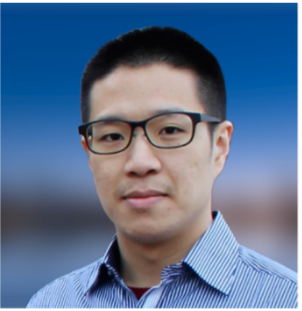 Yu-Jia Chen received the B.S. degree and Ph.D. degree in electrical engineering from National Chiao Tung University, Taiwan, in 2010 and 2015, respectively. From 2015 to 2018, he was a postdoctoral research fellow with National Chiao Tung University, Taiwan, and he was a postdoctoral research fellow with Harvard University from 2018 to 2019. In 2019, he joined National Central University, Taiwan, where he is currently an associate professor in the department of communication engineering. His research interests include non-terrestrial networks, wireless sensing and localization, and IoT security. Dr. Chen has published more than 40 articles in peer-reviewed international journal and conference papers. He is holding four US patents and four ROC patents.
Yu-Jia Chen received the B.S. degree and Ph.D. degree in electrical engineering from National Chiao Tung University, Taiwan, in 2010 and 2015, respectively. From 2015 to 2018, he was a postdoctoral research fellow with National Chiao Tung University, Taiwan, and he was a postdoctoral research fellow with Harvard University from 2018 to 2019. In 2019, he joined National Central University, Taiwan, where he is currently an associate professor in the department of communication engineering. His research interests include non-terrestrial networks, wireless sensing and localization, and IoT security. Dr. Chen has published more than 40 articles in peer-reviewed international journal and conference papers. He is holding four US patents and four ROC patents.
Dr. Chen has been serving as Technical Organizing Committee and Symposium Co-chair for many international conferences and symposia, including Globecom, ICC, and PIMRC. He is also co-founder of the IEEE workshop SPSCS, focusing on security and privacy in smart and connected systems. Prof. Chen has experience with tutorials at academic conferences such as Globecom and VTC. He also serves as a guest editor for IEEE Vehicular Technology Magazine special issue on Artificial Intelligence for Autonomous Vehicular Communication Networks. He is a Senior Member of IEEE.
Te-Chuan Chiu
 Te-Chuan Chiu received his B.S. degree in Computer Science from National Tsing Hua University (NTHU), Taiwan, in 2010, M.S. and Ph.D. degrees in Computer Science and Information Engineering from National Taiwan University (NTU), Taiwan, in 2012 and 2018. He has been a research scholar of the School of Electrical, Computer and Energy Engineering from Arizona State University (ASU), USA, in 2016-2017. Since 2018, he has served as a postdoctoral research scholar at the Research Center for Information Technology Innovation (CITI), Academia Sinica until 2022. He is currently an assistant professor at the department of computer science, National Tsing Hua University (NTHU), Taiwan. His research interests include B5G/6G communications, edge intelligence/AI, fog/edge computing, and AIoT.
Te-Chuan Chiu received his B.S. degree in Computer Science from National Tsing Hua University (NTHU), Taiwan, in 2010, M.S. and Ph.D. degrees in Computer Science and Information Engineering from National Taiwan University (NTU), Taiwan, in 2012 and 2018. He has been a research scholar of the School of Electrical, Computer and Energy Engineering from Arizona State University (ASU), USA, in 2016-2017. Since 2018, he has served as a postdoctoral research scholar at the Research Center for Information Technology Innovation (CITI), Academia Sinica until 2022. He is currently an assistant professor at the department of computer science, National Tsing Hua University (NTHU), Taiwan. His research interests include B5G/6G communications, edge intelligence/AI, fog/edge computing, and AIoT.
Shih-Fan Chou
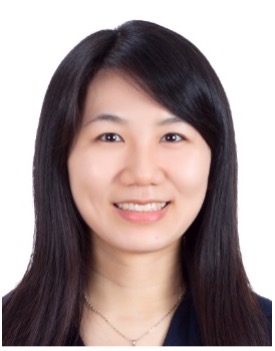 Shih-Fan Chou received the double B.S. degree from the Department of Computer Science and the Department of Management Science, National Chiao Tung University, Hsinchu, Taiwan, in 2009, the M.S. degree from the Institute of Network Engineering, National Chiao Tung University, in 2011, and the Ph.D. degree from the Department of Computer Science and Information Engineering, National Taiwan University, Taipei, Taiwan, in 2017. She joined the Department of Computer Science and Information Engineering, National Taiwan University of Science Technology (NTUST), Taiwan, in 2021, where she is currently an Assistant Professor. She was a Post-Doctoral Fellow with the Research Center for Information Technology Innovation, Academia Sinica, Taipei from 2019 to 2020. Her primary research interests include blockchain networks, 5G and 6G wireless and mobile networks, broadband cellular networks, and performance modeling and analysis. She was a recipient of the Google Anita Borg Memorial Scholarship in 2013.
Shih-Fan Chou received the double B.S. degree from the Department of Computer Science and the Department of Management Science, National Chiao Tung University, Hsinchu, Taiwan, in 2009, the M.S. degree from the Institute of Network Engineering, National Chiao Tung University, in 2011, and the Ph.D. degree from the Department of Computer Science and Information Engineering, National Taiwan University, Taipei, Taiwan, in 2017. She joined the Department of Computer Science and Information Engineering, National Taiwan University of Science Technology (NTUST), Taiwan, in 2021, where she is currently an Assistant Professor. She was a Post-Doctoral Fellow with the Research Center for Information Technology Innovation, Academia Sinica, Taipei from 2019 to 2020. Her primary research interests include blockchain networks, 5G and 6G wireless and mobile networks, broadband cellular networks, and performance modeling and analysis. She was a recipient of the Google Anita Borg Memorial Scholarship in 2013.



